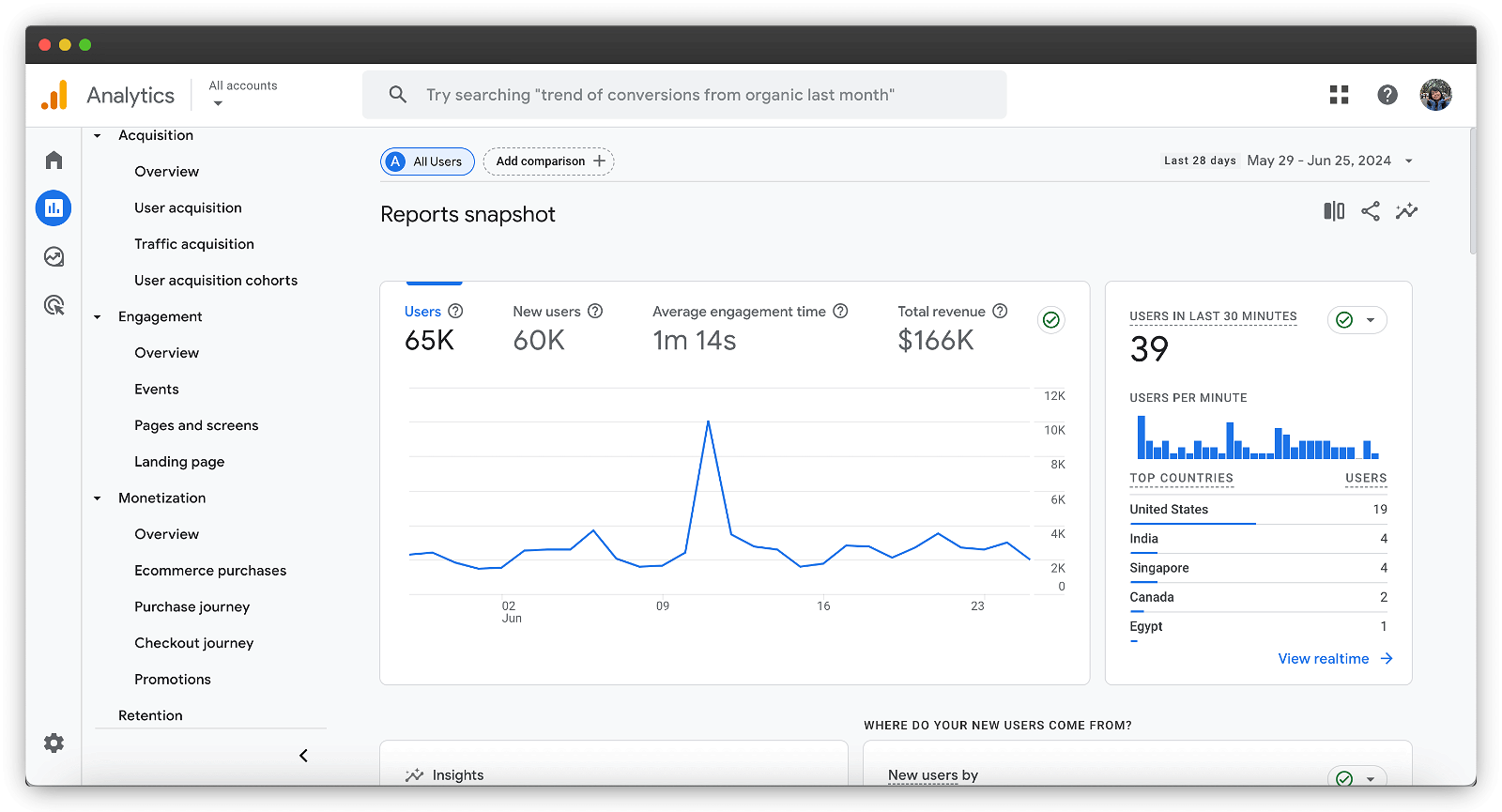When a web analytics tool crosses the fine line to becoming a marketing tool

Web analytics, as the name suggests, came around for helping website-owners visualize data about different elements of their website. This’d help them optimize web usage.
More deeply speaking, this helps contribute to the need of a business owner to stay data-informed and make better decisions, keep themselves grounded and keep steering towards the right paths to success.
But when being data-informed transforms into being data-driven, the lines start to blur.
Being data-driven means that the same business owners incentivize marketing teams (as I have been a part of) for growing specific data points, like revenue, sign ups, leads, and anything growth-related.
Open up any digital marketing job description on the web and you’ll know how true that is. Because of this, marketers tend to run different types of campaigns to generate number boosts.
That is exactly the opportunity that inspires a web analytics company to turn into a marketing land: campaign tracking.
Tracking marketing campaigns for a web analytics tool generally means tracking beyond the boundaries of the website. A digital marketer’s hunger to know how an audience interacts with their marketing campaigns helps them know their effectiveness and show their “impact”. The better the number boosts, the better the achievement of KPIs, and salary hikes.
They, knowingly or unknowingly, enable the Analytics tools’ philosophy of – anything that can be tracked, shall be tracked.
That’s what the internet gave us anyway – access. Access to the world, and the opportunity to do business with them. But that is a double-edged sword because this access and opportunity also opened doors for analytic tools to track these people, with or without their consent.
This gave birth to user-tracking, which is like an extension to website-tracking. All tech giants have come under multiple scrutinies at some point in their lives for incessantly tracking their users.
Dr. Shoshana Zuboff even wrote a 700-page book covering the topic of surveillance capitalism, i.e. capitalizing on the practice of tracking user activities and behaviors across the internet.
But let’s talk about what this does to the sanctity of a web analytics tool, when it decides to turn into a marketing tool:
-
The tool becomes more complex than it ever needed to. That points to bad UX, and delayed decisions.
-
Tools like Google Analytics become inherently non-compliant to privacy regulations, and produce the need to get cookie consent banners up on their users’ websites. That’s bad UX for the website visitors and potential customers. Not only can it lead to lost business – a counterproductive act – but also to bad brand image because of losing customer trust.
-
Analytics can become biased towards marketing goals rather than providing neutral insights. This is why inflated analytics or complex attribution models are a thing.
On top of this, tool-users indirectly contribute to modifying end-user behaviors. This isn’t straight forward and I highly recommend reading the book “The Age of Surveillance Capitalism” to understand this.
But, in a nutshell, it means that tech giants (like GA in this matter) use their user-data surplus to not only track and predict their behaviors, but also modify them with the help of modern-day algorithms.
There’s a fine line between understanding users and exploiting their behavior patterns. But, unfortunately, that is the end-result of surveillance capitalism, as Dr. Zuboff explains in her book.
That’s the complex game that a web analytics tool finds itself in, when it is made free to use. More happens than meets the eye. Free analytics doesn’t necessarily happen to promote a free internet, but instead to encourage as much data collection as possible.
Take Google Ads for example. It single-handedly produced $237B out of a total of $305B revenue for Google in 2023. How? Because of Google Ads’ ability to very accurately match an ad bidder’s buyer requirement with the characteristics of users from their vast database. You can join the dots.
Such user tracking would have been deemed creepy and criminal in the offline world. But we don’t look at it that way because we are never shown this side of the analytics industry.
IMHO, keeping the sanctity of web analytics alive is not about losing the opportunity to improve short-term marketing campaigns, it’s actually better for marketing as a whole.
That’s because staying within the acceptable boundaries of tracking forces a marketer to think about marketing that’s more long-term, effective, solves real problems, and keeps customers’ trust alive.
Practically speaking, a lot about marketing (and business) can still be measured with the help of website performance data, combined with other “vanity” metrics from platforms on which such campaigns may be performed.
For eg. If I do some video marketing on YouTube, the metrics therein like watch time, subscribers, traffic sources, card clicks, keywords, etc. will give me a good idea about the effectiveness of my video marketing. Similarly, my web analytics tool would tell me how many visitors I get from my YouTube videos.
Or, simply tracking the scroll length of my landing pages helps me understand where the drop-off is the most and what can be done to improve it. Or, seeing how many clicks a sign up button is getting opens a lot of room for speculation and improvement. The possibilities are endless.
Even users may feel more comfortable knowing their voluntarily submitted data is in good hands and being used for improvement of services rather than for targeted marketing or surveillance capitalism.
When users buy a product or service, they also buy an iota of the business’ personality. So being thoughtful about such implications pays off, even if it’s not apparent from the get go.
As long as the website tracking stays within the website, it is good for the simplicity and authenticity of the tool, and for the long-term quality of business and marketing decisions. Providing accurate, unbiased data and maintaining integrity should be an analytic tool’s happy responsibility.